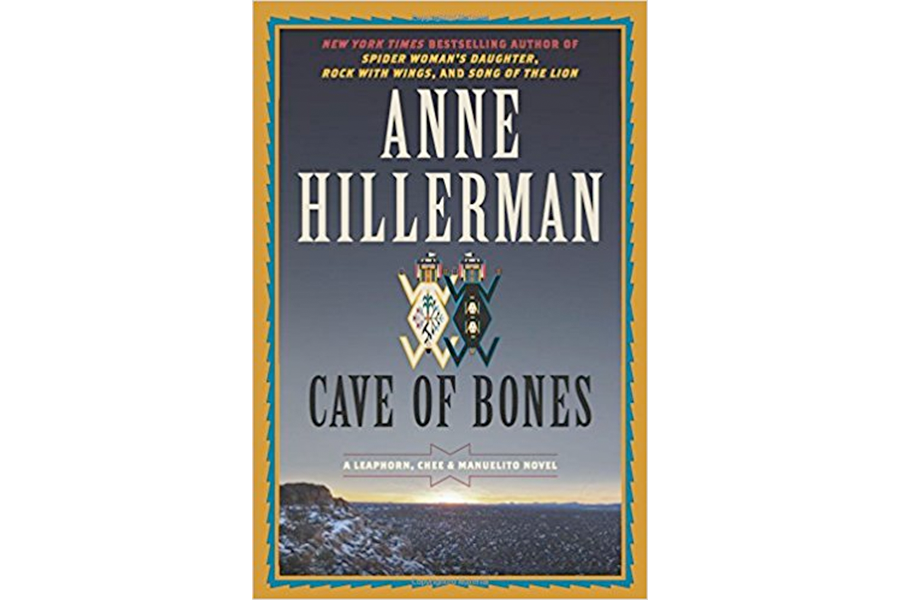Tony Hillerman's daughter Anne on keeping her father's mysteries alive
Loading...
For more than a generation, countless mystery fans eagerly awaited every new Tony Hillerman novel set on the Navajo reservation of the Southwest. They thrilled to his evocative depictions of Native American culture and the daring detection of young Navajo cop Jim Chee and grizzled investigator Joe Leaphorn.
Hillerman died 10 years ago, but his daughter Anne, a New Mexico native who grew up with her father's fictional characters, has revived the series on her own.
She's now out with her fourth mystery novel, Cave of Bones, which definitively captures the spirit of Tony Hillerman's masterpieces while adding her own special touches that expand the series and keep it relevant to modern times.
She recently talked to Monitor contributor Randy Dotinga about preserving her father's legacy while capturing her own voice.
Q: What inspired you to continue your father's series?
It started with "Tony Hillerman's Landscape: On the Road with Chee and Leaphorn," which came out the year after Dad died. He'd thought it would be great to do a book for people who don't live in this beautiful Southwest but might have thought he was exaggerating a bit about those places where, say, Joe Leaphorn has to pull off the road because the sunset is so beautiful.
I looked through the books for those quotes, and my husband, photographer Don Strel, and I spent a couple years going to the places that he mentioned.
After the book was published, we did a lot of talks, and people asked if there any more books in the works. I would have to say no, and I could really read the disappointment in their faces. They'd say, "I’ll just have to read those books again."
I was also missing "Uncle Joe" and "Uncle Jim." I’d basically grown up with those characters.
Q: What inspired you to focus on Bernie Manuelito, a secondary character in your father's work who's now a cop herself?
I really like the character of Bernie Manuelito and always had the hope that she'd be a full-fledged detective instead of being the girlfriend, the one who brings the coffee, the one who drives Jim around.
I said to Dad, "readers would like to see Bernie take the next step and solve a crime." He gave me that funny look that fathers give daughters – "Oh honey, what an interesting idea." But it stuck in my mind.
Q: How did you mold her into a main character?
I gave her a little sister who's hovering on the brink of disaster and a mother who worries about her and is full of good advice.
Bernie is actively involved in helping them, but she also has a full-time job and is still newly married [to Jim Chee].
That's enriched her character. It's true to what we're all dealing with as modern women no matter your culture.
Q: What’s been challenging for you?
I knew that I could never be Tony Hillerman. And I knew so many people who weren't kidding when they said they'd re-read the whole series. The characters would be really fresh in their minds, and that was intimidating.
I also knew I'd have to show my novel to my mom, Dad's first editor and his best and kindest critic. If anything offended her, I knew it would never see the light of day.
After I got a decent draft, I showed it to her. She called and said, "I want you to know that Dad would be proud of you."
Q: Do you ever get criticism about romanticizing or demonizing Native Americans?
It's particularly difficult when you have characters in law enforcement.
Most of the crimes in the Navajo nation are related to alcohol and drug use. Those problems spring from poverty and lead to domestic violence, child neglect, and just a lot of bad behavior. Going to jail doesn't solve anything.
I want to be true to the contemporary world where the books are set, but I don't want to support that drunken Indian stereotype. So I try to have characters who represent other sides of the Navajo culture, such as the college-educated people who come back and try to make things better. And those who are estranged from the culture and looking to reconnect to find grounding in their lives.
Q: What's next for the series?
For the past four books, Joe Leaphorn has been in the background as a consultant. In the next book, he'll be one of the main crime solvers. He's back in his prime.
Part of the story involves the Hubbell Trading Post. I’m trying to take readers to places on the Navajo reservation that my dad didn't use or mentioned in passing.
Q: What is your dad's legacy?
Until I went out into the world as a speaker, I didn't realize how many lives my dad's books touched.
People say, "I was never really much of a mystery reader, but I liked reading your dad's stuff because of the Southwest and the Navajos."
Maybe they go on vacation to the Grand Canyon, maybe they go through Tuba City or visit the dinosaur tracks. Then they come back.
The next thing you know they've retired and moved out here. I'll bet I've heard that story two dozen times.








